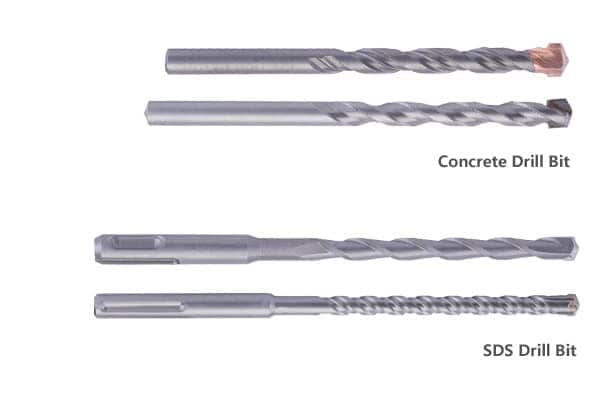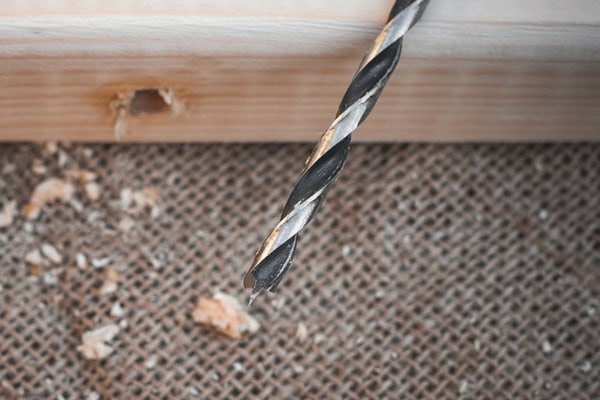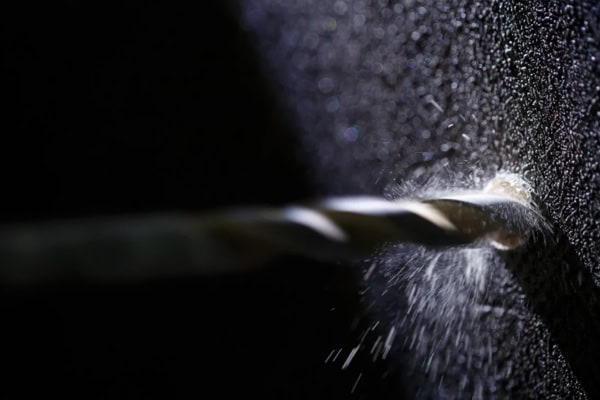Ever struggled to drill into brick or concrete? Using the wrong Matkap ucu1 can be a nightmare. It could damage your materials2, wear out your tools, or just take forever. Let’s make sure that doesn’t happen!
A masonry drill bit has a distinctive look. It has a wide, flattened tip, often shaped like an arrowhead, made of extremely hard material like tungsten carbide. This special tip helps it grind through tough materials like concrete, brick, and stone.

Choosing the right drill bit is very important. I will show you how to pick the best one for your job, and how to use it properly!
How to Choose the Right Masonry Drill Bit?
Ever felt lost staring at a wall of drill bits? I know I have! It’s important to pick the right one to save time and avoid damage.
To choose the right masonry drill bit, consider the material you’re drilling into and the size of the hole you need. For harder materials like concrete, go for bits with tungsten carbide tips. Make sure the bit’s size matches the anchor or screw you plan to use.

Let’s explore what to keep in mind when selecting a masonry drill bit.
Material of the Bit
| Malzeme | Tanım | Best Use Cases |
|---|---|---|
| Tungsten karbür | Extremely hard material that can withstand high temperatures and abrasion. | Ideal for drilling into concrete, stone, and very hard brick. |
| Karbür Uçlu Çelik | A steel body with a carbide tip, offering a balance of durability and cost-effectiveness. | Suitable for brick, block, and less demanding masonry tasks. |
Size and Type
- Çap: Match the bit size to the anchor or screw you’re using.
- SDS (Slotted Drive System): For use with rotary hammer drills, providing a secure fit and efficient power transfer.
- Standard Shank: Compatible with regular drills.
I remember one time when I was trying to hang some shelves in my garage. I grabbed a regular drill bit, and it was a disaster. The bit kept slipping, and I couldn’t get through the brick. After switching to a proper masonry bit, the job was done in minutes!
Can I Use a Masonry Drill on Wood?
I’ve had people ask me if they can use a masonry bit on wood if they don’t have a wood drill bit handy. It’s tempting, but is it a good idea?
Yes, you can use a masonry drill bit on wood, but it’s not recommended. Masonry bits are designed to grind, not cut, so they can leave a ragged hole in the wood. It might also take longer than using a wood drill bit.

Let’s see why it’s generally not a good idea to use a masonry drill bit on wood.
Potential Problems
| Issue | Tanım |
|---|---|
| Ragged Holes | Masonry bits grind instead of cut, leading to splintered and uneven holes. |
| Slower Drilling | These bits aren’t optimized for wood, so the process can be slow and require more effort. |
| Bit Damage | Wood can clog the bit’s flutes, causing it to overheat or wear out faster. |
Better Alternatives
- Brad-Point Bits: They have a sharp point for accurate positioning and clean exit holes.
- Spade Bits: Ideal for drilling larger holes quickly.
- Forstner Bits: Best for drilling clean, flat-bottomed holes in wood.
One time, I tried to use a masonry bit on a piece of plywood. he result was a mess, with the wood splintering3 all around the hole. I learned my lesson and now always reach for the right bit for the job4.
Is it Possible to Sharpen a Masonry Bit?
I’ve had some masonry drill bits get dull after a lot of use. So, I wondered if it was possible to sharpen them.
Yes, you can sharpen a masonry bit, but it requires special tools and care. Use a diamond sharpening tool or a grinding wheel with a fine grit. Be careful not to remove the carbide coating on the tip. Only sharpen it enough to restore the cutting edge.
Let’s see how to extend the life of your masonry bit, but it’s essential to do it correctly.
Sharpening Tips
| Uç | Tanım |
|---|---|
| Diamond Sharpening Tool | Best for maintaining the integrity of the carbide tip. |
| Fine Grit Grinding Wheel | Use light pressure to avoid overheating and damaging the bit. |
| Soğutma | Dip the bit in cool water periodically to prevent overheating, but avoid quenching hot carbide as it can crack. |
How to Drill into a Masonry or Concrete Foundation?
I’ve learned that drilling into a concrete foundation needs some special care. Here is what I know.
To drill into a masonry or concrete foundation, use a hammer drill with a masonry bit. Start by marking your spot and creating a pilot hole. Drill slowly with steady pressure, and pull the bit out occasionally to remove dust.

Let’s discuss careful planning and execution to avoid structural issues when drilling into a foundation.
Preparation and Safety
| Step | Tanım |
|---|---|
| Check for Obstructions | Ensure there are no hidden pipes or wires in the area you plan to drill. |
| Pilot Hole | Start with a smaller bit to create a guide hole, reducing the risk of the drill bit wandering. |
| Dust Removal | Regularly remove dust from the hole to prevent clogging and reduce wear on the bit. |
Drilling Techniques
- Darbeli Matkap: Use a hammer drill for its pounding action, which makes drilling through concrete much easier.
- Steady Pressure: Apply consistent pressure while drilling, but avoid forcing the bit.
- Cooling Breaks: Take breaks to let the drill bit cool down, preventing overheating.
Once, I had to drill through my foundation5 to run a new plumbing line. I was nervous about damaging the structure, so I took my time, used a darbeli Matkap6, and frequently cleared the dust. The hole came out clean, and everything went smoothly.
Çözüm
Choosing the right drill bit, using it properly, and maintaining it will make your projects easier and safer. Whether you are a professional or a DIY enthusiast, understanding these tips can save you time, money, and frustration.
-
Discover the ideal drill bits specifically designed for brick and concrete to ensure efficient and damage-free drilling. ↩
-
Learn effective techniques to avoid damaging your materials while drilling, ensuring a successful project. ↩
-
Understanding the causes of wood splintering can help you choose the right materials and techniques for your projects. ↩
-
Choosing the right bit is crucial for achieving clean cuts and preventing damage; explore expert tips to enhance your woodworking skills. ↩
-
Exploring safe methods for drilling through a foundation can protect your home and ensure structural integrity during renovations. ↩
-
Understanding how a hammer drill functions can help you choose the right tool for your projects and ensure safety. ↩